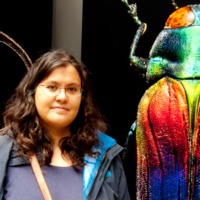
bojan djuric
Related Authors
Giusto Traina
Université Paris-Sorbonne (Paris IV)
Alejandra B Osorio
Wellesley College
Sinclair W Bell
Northern Illinois University
Giorgos Papantoniou
Trinity College Dublin
Carlos Fabião
Universidade de Lisboa
Maria Nilsson
Lund University
Florin Curta
University of Florida
Helen De Cruz
Oxford Brookes University
John Sutton
Macquarie University
Kristian Kristiansen
University of Gothenburg
InterestsView All (19)










Uploads
Papers by bojan djuric
comprehensively analyse the column remains. The material for analysis comprised 83 bases or parts thereof, 227 fragments and three complete shafts, as well as 72 fragments of Ionic and Corinthian capitals recovered during the archaeological excavations undertaken at the site from 1953 onwards.
The text focuses on the column remains in marble, white and coloured. The white marbles mostly came from Prokonnesos and Pentelicon, but also from Thasos and Berkovica. Coloured marbles comprising marmor thessalicum, marmor troadense, marmor syenite and pink Berkovica marble (BG) were only used for column shafts and even there rarely.
Slovenia). The existence of an ancient quarry in Podpeč has been substantiated based solely on the macroscopic similarity
between the Lithiotid Limestone Member outcropping in Podpeč and the associated Roman monuments discovered in
Ljubljana. In the present work, we have attempted to find tangible archaeological and geoarchaeological evidence for
its existence. Archaeological excavations in the form of three trenches were carried out in the northernmost part of the
quarry. We determined the lithological composition of limestone discovered in the trenches and the limestone used for
the 288 objects found in Ljubljana. The lithological analysis of the monuments from Emona revealed that as many as 182
(or 64%) of the analysed monuments were made of limestone, which is lithologically identical to the types of limestone
outcropping in Podpeč. Lithologies represented in monuments also spatially group north of the modern quarry. However,
the question of the affiliation of some of the varieties of limestone represented remains open. These limestone types
lack diagnostic components and could also belong to the slightly older Krka Limestone Member. Reconstruction of the
extent of the ancient quarry was enabled using microfacies comparison of lithostratigraphic source units and objects/
products, as well as with the historical analysis of early cartographic and cadastral documents. Studying the forms of
the earliest objects (stelae) also suggests that the earliest monuments were produced by stonemasons who came to the
area from the quarry in Aurisina (Italy).
across the town of Sremska Mitrovica as well as at Site 1a - Imperial palace. Particular attention was paid to two closed groups:
the monolithic altars from the temple of Iuppiter within the statio beneficiarii, made between ca AD100 and 231, and the remains
of the temple known as the »Tetrapylon«, consisting of blocks of limestone. The results of the analysis show a parallel and quantitatively comparable use of limestone of Lithotypes I and II for altars dating from ca AD100 to ca 185 as well as a predominance
of Lithotype II in later times. The analysis of the limestone blocks used in the construction of the »Tetrapylon«, on the other hand,
has shown the material to originate from the Dardagani quarry and revealed an as yet unknown lithotype from the area.
and is now kept in the Muzeul Național al Banatului, in Timişoara (RO), caused considerable unease among scholars in the past
as it could not be convincingly connected with any of the productions in Pannonia and Moesia Superior. Only Silvio Ferri, albeit
a long time ago, correctly identified its connection with the sarcophagus production in Sirmium and with the sarcophagus of
Asclepiodota in particular, made of Dardagani limestone. Sarcophagi of volcaniclastic rock have only been recorded in the region
of Srem and its immediate vicinity, and were all produced in Sirmium. The material most likely arrived there from the south,
quarried near the village of Rajići, ca 25 km west of Domavia, in the valley of the River Drina. The structure and decoration of
the sarcophagus from Titel reveal it as essentially the type produced by the workshops at Salona using models from Prokonessos.
Having said that, its decorative details reveal a more complex picture. The decoration of narrow strips of plant motifs indicates
a close relationship between the sarcophagus workshops at Sirmium and the workshops active in the middle and upper valley
of the River Drina with its tributaries, with the centre at Skelani (municipium Malvesiatium), which, in turn, had close ties with
the Salona production. The use of the Norico-Pannonian volute of Type 6 (after Pochmarski) on the inscription panel frame of the
sarcophagus from Titel shows another area of influence – the travertine sarcophagus production of Aquincum – on the appearance
of the sarcophagi from Sirmium that freely use these motifs (including Type 7) to form the frames of the inscription and figural
panels. Available evidence clearly shows that the sarcophagus from Titel can be attributed to the Sirmium sarcophagus production
of the 3rd century, more precisely its second half.
comprehensively analyse the column remains. The material for analysis comprised 83 bases or parts thereof, 227 fragments and three complete shafts, as well as 72 fragments of Ionic and Corinthian capitals recovered during the archaeological excavations undertaken at the site from 1953 onwards.
The text focuses on the column remains in marble, white and coloured. The white marbles mostly came from Prokonnesos and Pentelicon, but also from Thasos and Berkovica. Coloured marbles comprising marmor thessalicum, marmor troadense, marmor syenite and pink Berkovica marble (BG) were only used for column shafts and even there rarely.
Slovenia). The existence of an ancient quarry in Podpeč has been substantiated based solely on the macroscopic similarity
between the Lithiotid Limestone Member outcropping in Podpeč and the associated Roman monuments discovered in
Ljubljana. In the present work, we have attempted to find tangible archaeological and geoarchaeological evidence for
its existence. Archaeological excavations in the form of three trenches were carried out in the northernmost part of the
quarry. We determined the lithological composition of limestone discovered in the trenches and the limestone used for
the 288 objects found in Ljubljana. The lithological analysis of the monuments from Emona revealed that as many as 182
(or 64%) of the analysed monuments were made of limestone, which is lithologically identical to the types of limestone
outcropping in Podpeč. Lithologies represented in monuments also spatially group north of the modern quarry. However,
the question of the affiliation of some of the varieties of limestone represented remains open. These limestone types
lack diagnostic components and could also belong to the slightly older Krka Limestone Member. Reconstruction of the
extent of the ancient quarry was enabled using microfacies comparison of lithostratigraphic source units and objects/
products, as well as with the historical analysis of early cartographic and cadastral documents. Studying the forms of
the earliest objects (stelae) also suggests that the earliest monuments were produced by stonemasons who came to the
area from the quarry in Aurisina (Italy).
across the town of Sremska Mitrovica as well as at Site 1a - Imperial palace. Particular attention was paid to two closed groups:
the monolithic altars from the temple of Iuppiter within the statio beneficiarii, made between ca AD100 and 231, and the remains
of the temple known as the »Tetrapylon«, consisting of blocks of limestone. The results of the analysis show a parallel and quantitatively comparable use of limestone of Lithotypes I and II for altars dating from ca AD100 to ca 185 as well as a predominance
of Lithotype II in later times. The analysis of the limestone blocks used in the construction of the »Tetrapylon«, on the other hand,
has shown the material to originate from the Dardagani quarry and revealed an as yet unknown lithotype from the area.
and is now kept in the Muzeul Național al Banatului, in Timişoara (RO), caused considerable unease among scholars in the past
as it could not be convincingly connected with any of the productions in Pannonia and Moesia Superior. Only Silvio Ferri, albeit
a long time ago, correctly identified its connection with the sarcophagus production in Sirmium and with the sarcophagus of
Asclepiodota in particular, made of Dardagani limestone. Sarcophagi of volcaniclastic rock have only been recorded in the region
of Srem and its immediate vicinity, and were all produced in Sirmium. The material most likely arrived there from the south,
quarried near the village of Rajići, ca 25 km west of Domavia, in the valley of the River Drina. The structure and decoration of
the sarcophagus from Titel reveal it as essentially the type produced by the workshops at Salona using models from Prokonessos.
Having said that, its decorative details reveal a more complex picture. The decoration of narrow strips of plant motifs indicates
a close relationship between the sarcophagus workshops at Sirmium and the workshops active in the middle and upper valley
of the River Drina with its tributaries, with the centre at Skelani (municipium Malvesiatium), which, in turn, had close ties with
the Salona production. The use of the Norico-Pannonian volute of Type 6 (after Pochmarski) on the inscription panel frame of the
sarcophagus from Titel shows another area of influence – the travertine sarcophagus production of Aquincum – on the appearance
of the sarcophagi from Sirmium that freely use these motifs (including Type 7) to form the frames of the inscription and figural
panels. Available evidence clearly shows that the sarcophagus from Titel can be attributed to the Sirmium sarcophagus production
of the 3rd century, more precisely its second half.
bimillenary of the foundation of Emona (Colonia Iulia Emona), the Roman-period predecessor of the
modern Ljubljana. The territory of Emona has witnessed numerous archaeological investigations over the last two
decades, both in the urban areas, the suburbs and the adjacent cemeteries.